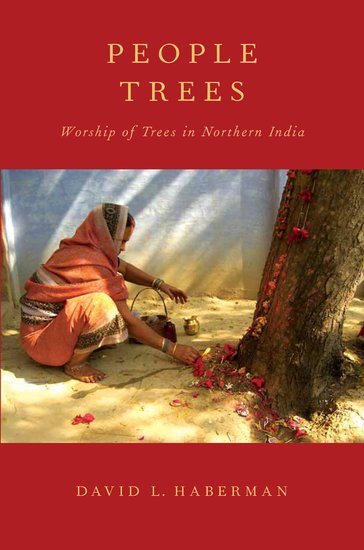By David Haberman
If I have learned anything as a lifelong student of the world’s multitude of religious traditions, it is that reality for humans is malleable and quite varied — nothing is essential in human experience. Almost everything gets filtered through and shaped by a particular cultural lens. Something as simple as a tree is not so simple after all. From a biological perspective trees have much in common worldwide, but from a cultural perspective there exists an immense difference between them. Human perception and understanding of any aspect of the world seems to be determined largely by the particular interpretive lens through which it is viewed. Importantly, different cultural perspectives result in different experiences and behavior. What is a tree when seen from another cultural viewpoint? What range of interactive experiences is possible with it?
Historically tree worship has been a vital feature of much religious activity worldwide, and trees are still commonly found at the center of religious shrines in India. In this context they are typically regarded as powerful sentient divine beings with whom humans can have mutually beneficial relationships.

The personhood of trees is taken seriously as people interact with them in a variety of ways. The pipal or bodhi tree is often considered to be the most sacred tree in India. Buddha is said to have achieved enlightenment under this tree and many Hindus consider it to be an embodied form of the mighty god Vishnu.

Because of its highly beneficial medicinal qualities, the neem tree is frequently called the village pharmacy. It is commonly regarded as the body of the goddess Shitala. In some parts of India this tree is dressed with colorful cloth and a metal facemask is attached to the trunk of the tree as a way of honoring it and facilitating a more intimate connection with it.

Banyan trees are often identified with the god Shiva and are associated with longevity and immortality, since they have the ability to live indefinitely. They send down aerial roots, which over the course of time become massive trunks that in turn send out aerial roots of their own, creating an ever-expanding and self-perpetuating forest. They too are the recipients of a wide range of religious offerings and worship.

Trees are clearly amazing forms of life that have captured the human imagination in a number of ways. A question we might ask on this Arbor Day is: what possibilities would be available to us in our relationships with trees if we were to expand our understanding of them, inspired by the perceptions of our own ancestors or those of people living in different cultures today, such as the many tree worshipers of India?
David Haberman is Professor of Religious Studies at Indiana University-Bloomington. He is the author of People Trees: Worship of Trees in Northern India.
Subscribe to the OUPblog via email or RSS.
Subscribe to only religion articles on the OUPblog via email or RSS.
All photos courtesy of the author.



Recent Comments
There are currently no comments.